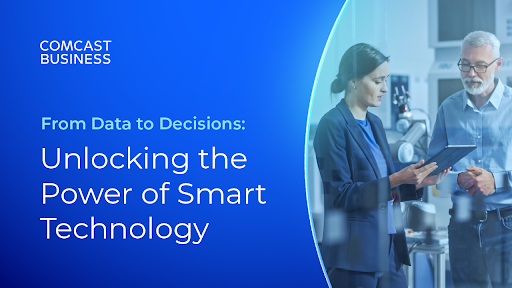4 Ways Generative AI Can Transform Retail
A look at the future of personalization, customer service, supply chains, and business insights

The advent of Generative Artificial Intelligence (GenAI) brought with it an unprecedented wave of AI hype and a wealth of very real disruptive opportunities for retail decision makers. While enterprise retailers have been leveraging AI and big data for a while, GenAI changes the game by extracting data from unstructured sources and natural language inputs with a high degree of accuracy and using this to generate customized, contextual experiences in real time for customers across channels and digital touchpoints.
Providing a Differentiated Customer Experience Across Channels
Today’s empowered consumers have come to expect a custom-tailored shopping experience backed by personalized support when and where they need it. Ideally customers will engage with a multitude of channels and touchpoints as one unified experience. GenAI can help retailers deliver this frictionless cross-channel approach to build loyalty and drive revenue.
Existing retail AI tools may combine a customer’s shopping history with other customers’ anonymized data to help predict purchase decisions. GenAI can take this to a new level by delivering those insights in new more engaging ways. Customers will receive AI-generated personalized shopping recommendations that are delivered seamlessly across a retailer’s website, app, and physical locations. And these recommendations can go beyond the typical “you might like” model by explaining in natural language why the item was chosen, which option offers the customer’s preferred fit or style, and even generating discount offers unique to a customer or location.
Use Case Example: An apparel retailer can use GenAI to power a virtual “personal shopper” experience that is available 24x7 via a website, app, or in-store via kiosks and digitally connected employees. In addition to style and size recommendations, the personal shopper can use AR to enable garments to be tried on virtually. Selected items can then be placed in a cart that follows the customer across touchpoints whether they buy immediately online or prefer to complete the purchase or pick up in store.
Delivering Better Customer Service with an AI-augmented Approach
When customers have questions or need help, they want the right answer, and they want it right away. They don’t want to be sent to support pages they’ve already seen or repeating their inquiry at each step of the customer journey, scenarios that are all too common with today’s algorithmic chatbots.
When GenAI is used to power smart chatbots, the customer experience can improve dramatically. These bots can see which pages a customer has visited, determine contextually what the issues might be, and provide relevant, personalized responses instead of working from pre-scripted prompts. If a live support agent is needed, the chatbot can automatically summarize the interaction, including the questions asked and pages visited. The informed agent is now able to immediately begin addressing the issue at hand without the customer having to repeat or re-ask anything.
Use Case Example: A national retailer can use GenAI to analyze natural language customer service inquiries and conversations as they come in. This can identify timely and accurate answers to questions customers are asking and automatically provide this information to chatbots and customer service agents to improve responses. GenAI can also automatically update website product pages and FAQs to address common questions earlier in the customer journey.
Using Predictive Analytics to Create Intelligent Supply Chains
One of the big advantages GenAI brings over previous retail AI applications is its ability to gather data at scale from unstructured and disparate sources. Retailers can leverage this by tapping into real-time data from third-party sources and combining this with their own first-party data sets, creating a predictive analytics engine that can lead to better forecasting, more efficient logistics, and help manage warehouse and inventory expenses. GenAI can also account for local supply chain disruptions, either as they occur or as predicted by data. This enables the automatic re-routing of shipments or sourcing from new suppliers, ensuring prompt service for customers.
Use Case Example: A chain of coffee shops could use data analytics to identify that a streak of three or more days that are 8 degrees below average during summer months leads to a decrease in demand for frozen drinks. GenAI could take this insight and combine it with real-time weather data to predict these streaks. It could then automatically adjust supplier purchases as well as shipment quantities and routes so the perishable ingredients for frozen drinks are not transported or stored in shops unnecessarily, thereby reducing risk of spoilage or inventory loss.
Unlocking Data to Make Better Strategic Business Decisions
Competitive advantage in the future of retail will be driven by who can extract the most value from their data and apply it in the most meaningful way. GenAI’s ability to pull data from previously untapped or difficult-to-access sources, like live video and text- or audio-based natural language inputs, opens up new opportunities for better-informed business decisions. Its ability to generate documents, including training materials and schematic images, means these decisions can be implemented faster.
Use Case Example: A retailer with a national footprint could use data-capture cameras combined with AI-based eye tracking and sentiment analysis to gauge customer reactions when testing in-store changes like new check-out options or merchandise arrangements. Fine tuning could be performed and analyzed in real time at a single or small set of locations, enabling the retailer to quickly identify which changes have a positive impact. GenAI could then automatically apply this by creating employee-training guides and updating planograms across the entire chain.
Generative AI is already beginning to transform the retail environment. As this trend accelerates, business leaders must ensure they have the right infrastructure, including fast, reliable networking and connectivity, needed to support large-scale data collection, processing and automated response across multiple digital touchpoints.
Learn more about how Comcast Business is helping retailers leverage technology to power customer and employee experiences. https://business.comcast.com/enterprise/industry-solutions/retail
Explore the disruptive potential generative AI brings to retailers and customers.
Locked Content
Click on the button below to get access
Unlock NowOr sign in to access all content on Comcast Business Community
Resource Center
Learn how Comcast Business can help
keep you ready for what's next.










